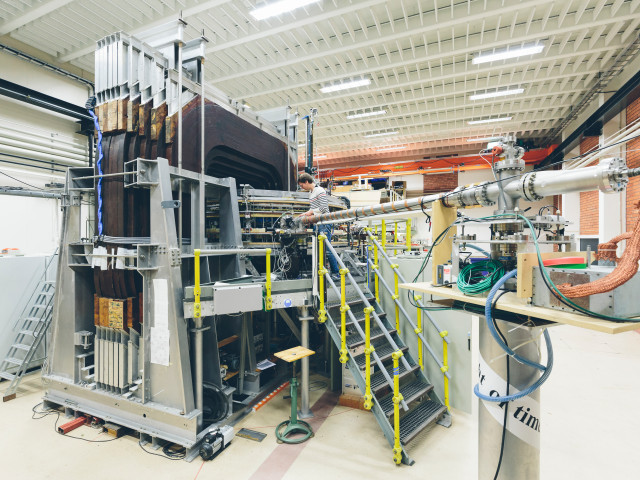Teori om Monte Carlo metoder.
Generella variansreducerande tekniker.
Pseudo-slumpmässiga och kvasi-slumpmässiga sekvenser.
Monte Carlo simulering av partikeltransport.
Monte Carlo simulering av kärnreaktorer.
Variansreduktionstekniker i Monte Carlos reaktorfysik.
Trender i Monte Carlos reaktorfysik.
Monte Carlo inom andra områden som nuklearmedicin, strålskydd etc.
Monte Carlo-metoden är ett stokastiskt sätt att lösa olika problem genom numeriska simuleringar med sekvenser av slumptal. Metoden används ofta när lösningen inte lätt kan härledas på något annat sätt. Inom reaktorfysik är metoden praktiskt taget den enda som kan ge detaljerad inblick i neutrontransportproblem i komplexa klyvbara system. Monte Carlo-metoder används idag mycket flitigt inom olika fysik- och teknikområden allt från astrofysik till t.ex. nuklearmedicin, särskilt vid modellering av strålbehandling av cancer.
Efter avslutad kurs ska studenten kunna:
- tillämpa olika Monte Carlo-tekniker, såsom enkel provtagning, kontrollvariationer, korrelerad sampling, stratifierad sampling och betydelsesampling, för att lösa olika matematiska och fysiska problem.
- programmera och välj en generator eller pseudo-slumpmässiga och kvasi-slumpmässiga sekvenser.
- tolka och utvärdera resultaten av statistisk karaktär.
- behärska teorin bakom Monte Carlo-simuleringen av neutrontransport i klyvbara system och icke-klyvbara system med en extern neutronkälla.
- aktivt använda Monte Carlo-koder etablerade i reaktorfysik. Studenten ska kunna skapa en matematisk modell av vilket klyvsystem som helst, förbereda punktvisa kärndatabibliotek för specifika förhållanden, välja lämpliga värden för ett antal fria parametrar som påverkar de statistiska och systematiska felen, köra simuleringen och härleda, tolka och utvärdera resultaten av intresse.
